Prepaid Electricity Metering
The electricity billing process has been done in a similar manner in almost all countries for several years. It involved a meter reader, who once every month would visit homes to check electricity consumption rate and then prepare and send the bill to the customer. It was a slow and cumbersome process that used a lot of time and energy.
However, with the emergence of new techniques of billing and payment of electricity bills, the whole process has been made much easier and faster. One such technique is the prepaid electricity payment plan, which has not only done away with meter readers, but it has also made it possible for one to pay his electricity bills from the comfort of his home.
So, what is a prepaid electricity plan?
Prepaid electricity is an electricity payment plan that enables consumers to pay before using electricity—it is similar to prepaid mobile phones. As long as you have some money in your prepaid card, you are provided with the service. However, when you have a zero balance, the service is discontinued. This plan is available in states like Maryland, Tennessee, Georgia, and Texas—thanks to their deregulation laws. Due to its flexibility, the plan is also known as a pay-as-you-go plan.
How it Functions
For it to work, you will need to load some money into your prepaid card. This is then entered into the microcontroller as a code. The controller then gathers information from both the prepaid card and energy meter. Once all the required information has been gathered, the microcontroller compares the information on energy limits and the energy meter reading to compute the amount of energy consumed which is then displayed on a LED or LCD screen. The energy consumed is usually displayed either as 1kWh or one unit. 1kWh simply refers to the amount of energy needed to produce 1000watts of energy for 1 hour.
Prepaid Energy Meter
Just like the way electricity plans have evolved, electric meters also have some major changes. In some parts of the world, electricity consumers pay their prepaid bills using prepaid electricity meters. For example, in England, prepaid customers have keys, tokens, or smartcards that they recharge with money using either smartphone apps or manually at the convenience stores. The keys, tokens, or cards can then be used directly with the prepaid meter at the house to load the electricity credit.
In other countries such as South Africa, Kenya, and Sudan, electricity consumers usually purchase unique codes which are keyed-in using keypads on electric meters.
The prepaid meters are designed in such a way that the electricity is automatically disconnected once the money has been exhausted. When you recharge your prepaid card or input the tokens on the electric keypads, the automatic switch (relay), automatically establishes a connection and you can once again access the service. Another great thing about prepaid metering is that you are notified either through text or email on the status of your prepaid balance and your daily energy consumption. This enables you to know when to recharge your account before it reaches zero. The balance and energy consumption information are also displayed on the prepaid energy meter just in case you miss the notification.
Texas Smart Meters
Smart meters have been installed in most Texas homes. It is one of the popular ways of paying postpaid or prepaid electricity plans. With smart meters, you can optimize your energy saving as well as enhance your Electric Reliability Council of Texas (ERCOT) grid credibility. The modern smart electricity meters can transmit your energy consumption information directly to the provider by the use of radio waves. Another benefit of smart prepaid meters is that it makes it easy for consumers to make their payments. In fact, you can make the payments while sitting on the comfort of your couch.
Other benefits of smart prepaid metering include real-time meter reading, instant alerts, faster order processing for stopping or starting service, easy to confirm charges, and few employees required to read electric meters.
Advantages of Prepaid Electricity Meters
One key advantage of prepaid electricity metering is that it enables you to control your electricity usage. Since you are required to pay for the service before use, a prepaid electricity plan enables you to plan your energy consumption and remove unnecessary expenditure. It also makes you environmentally sensitive as it motivates you to be conscious of your energy usage. It makes you think about other environmentally friendly ways of generating energy and cutting down on electricity bills.
Furthermore, prepaid metering provides you with the opportunity to track your energy consumption through its daily messages. This can trigger a change and adoption of positive energy usage habits that can help you shade at least 20% off your daily energy consumption. Another great thing about prepaid metering is the fact that it gives you the option of choosing how much money you want to spend on electricity use.
Prepaid metering also allows you to easily compute your daily electricity use as well as manage your account using either a web portal or a smartphone app. As a consumer, you can be able to know your current balance and also estimate your future usage
Why You Need a Prepaid Energy System
The old method of electricity billing is quite cumbersome and tedious. It entails many activities that are energy draining such as preparing the bill and reading energy consumption data from house to house. Accuracy is another issue that was difficult to maintain in the old analog system. With prepaid electricity meters, you can be certain of receiving accurate energy consumption information on a daily basis.
In conclusion, the creation of prepaid electricity meters simplifies the task of monthly electrical billing, even in the odd chance where there is an incorrect energy reading. In short, prepaid metering is beneficial to both the consumer and the energy providers as it enables them to be aware of their energy consumption. It ensures that no guess work is done in the computation of your monthly electric bills.
What our customers are saying
See why our power customers say we're the best electricity provider in Texas!
I was worried about getting electricity for my home through a prepaid company. I was calling around to see different rates then going through all the hassle of credit checks while dropping points each…
I have been with this company for several years and have been very happy since. Even when I moved, they made my usually stressful situation very easy and carefree. I recommend them to everyone that I…
I have enjoyed the service for 2 years now. In the beginning this service was planned to be temporary but with the service being so effective for me i decided to keep it for the long haul. I’m a happy customer.




